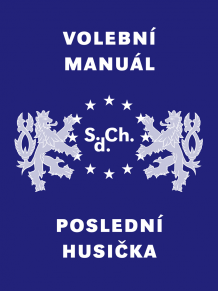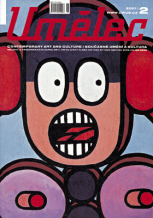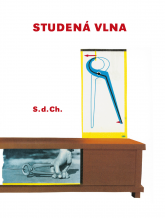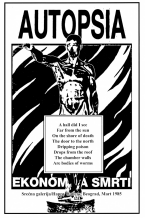| Časopis Umělec 1998/1 >> Pojmenovávat očekávání (s Jiřím Ševčíkem) | Přehled všech čísel | ||||||||||||
|
|||||||||||||
Pojmenovávat očekávání (s Jiřím Ševčíkem)Časopis Umělec 1998/101.01.1998 Lenka Lindaurová | rozhovor | en cs |
|||||||||||||
|
Ševčík is a theorist, a curator and a professor at the Academy of Fine Arts, he also worked as the director of the Modern and Contemporary Art Collection of the National Gallery - Veletržní palác.
By Lenka Lindaurová Many of the important past exhibitions would not happen if it wasn’t for you as a curator. Your contribution to the art scene was significant especially in the 1980‘s and at the beginning of the 1990‘s. For many artists, it was a matter of prestige to cooperate with you and your wife. Has this somehow changed since then? In the 80‘s, it was about a group appearance. It was a generation problem which raised the question of how to interpret what artists are coming up with and to name the expectations. Naming expectations is one of the most important roles of curators. Since it was a group appearance which was parallele to many movements in the world, we had much easier work. In the 90‘s the situation dissolved into many directions and unclear polarities. Nobody knows what to make out of them and “naming expectations“ is much more difficult which is now appearant also in the international art scene. It is true that we were doing more exhibitions before. As a curator at the Prague Municipal Gallery and the National Gallery, I had much more chances to work and had something to offer in exchange. Our curiosity to discover new people, however, has not grown feeble at all. The 80‘s generation is very different from the previous generation. Is the current generation also different from its predecessor? I think so. After the first post-modern wave, the Monday group took the scene at the end of the 80‘s and beginning of the 90‘s. This was a different mentality. They understood the questions raised in the 80‘s yet they were somewhere else. They themselves feel that communication with older people is more difficult, there’s even quite considerable distance. Could you give some exapmles of the questions you’re talking about? The 80‘s generation broadened the space by the aggressive drive with which they pushed through their mythologies, romantic visions, post-modern blending of various iconographies. It had the effect of enlighting and liberation from the existential depression. This is also the origin of the great tension and clash inherent in Czech cultural scene. This tention is still present and has a broader validity. I will try to define some of its typical features. One of them is the fact that art is often being substantiated and defined by itself, not by that which is broader and is connected with reality of social life. Trends towards strong belief in the power of art, escapism to lyrical fairy-tale-like work, morality of eternal truth, etc. I believe that art of the 90‘s will try to justify broader social and even political relevance. That way, art will come closer to life, presence and the world. The second feature which is connected to what I’ve just said is something we called “tyranny of intimacy“ according to American sociologist Sennet. This concerns the problem of public and private sectors which is also a theme dealt with by the Monday group. Tyranny of intimacy to me is a situation when the rules of a closed society are superior to the rules of public space, when I bother the viewer with my overpsychologized problems. In Czech environment, tyranny of intimacy is manifested by false self-confidence of some sort of originality, prive of closed environment, authenticity of that which was left untouched by foreign influences. Younger generation who start to think more socially and in broader dimensions are not suffering from this self-assurance of one’s own greatness. And finally, the third feature. If we rely too much on a closed way of expression, aesthetism and lyrism of our reflection, we become more understandable for the others (or we produce something like a kitsch). Contemporary culture is more global and open. Nobody is asking here what the status of an artist in a new society is, how the term art has changed and whom it is trying to address. In short, I feel the need to redefine ourselves socially and perhaps politically. In a global situation, I also have to describe my troubles using a language which is more generally understandable if I want to communicate anything at all. Do you feel that communication between the art world and the public has changed for the better? No, I don’t. Art is not able to place itself correctly in society and in a broader space than its own. This may lead to isolation and we will slowly experience crisis which has already receded in the west. Say, issues of musealization of art which is closing itself in an artificial environment and communicates only with the kind of audience who want to see a spectacle in galleries and do not communicate contemporary problems. In our art, social relations are not considered. We are often terrorized by intimate relationships, just the same way as in politics. Not much has been said about things that have already been discussed elsewhere. I also think that our society shows quite lowered level of sensitivity. Is it a question of artists themselves or institutions which should strive to improve communication between art and the audience? To a certain extent, it is a question of institutions that are not trying to “name the expectations“, they do not provide space for those things that art brings about in advance. They take over exhibitions like products, goods, they lack energy to mediate works between art and the public. It is not just a question of institutions, however, it is a question of the entire society which lacks energy. Why didn’t you go to work in a gallery after you had left Veletržní palác? There wasn’t really any job available and I would probably get into a conflict again anyway. The position at the Academy was offered to me unselfishly and with a good reason that it would be bad not to use some people’s capacity in contact with young people. Would you go now? My experience with the National Gallery, an institution so large, bullet-proof, misty and stiff is just too frightening for me. What could be interesting is working for a smaller gallery but I am quite satisfied being at the Academy. I can satisfy my curiosity to find out what the youngest are doing. With the exhibitions that I and my wife organize we try to attract new artists. This is what we’re interested in. We don’t limit ourselves to just a circle of people whom, according to some, we terroristically put through. Most of the friendships still last but as curators we try to put artists into new contexts. This is important for us because the scene has to polarize somewhere. The more it gets polarized and the more places are involved in it, the better. We are still a one-scene country which is, compared to Poland for example, a great handicap. We were very happy that the Artist has published the story on Ostrava developing a relevant art scene which deserves some attention. We’re trying to do an exhibition for them in Prague. Have you ever considered running your own private gallery? We were thinking about it. At the end of the 80‘s we wanted to start an independent gallery which could cater younger generation. To do so, however, you need money and you have to make a solid decision to radically change your life and way of work in art. The role of a gallerist is different from the one of a critic and an art-historian. Yet, in our country art operations still lack fair conditions and these roles are often intertwined. A lot may be tolerated but I believe that it is not possible for somebody who is selling art professionally, like [gallerist] Jiří Švestka, to be also a member of a jury that is giving out awards to artists he himself represents, or to be a member of an acquisition committee at a state institution. I believe that the role of a gallerist is very important here yet underappreciated. I would imagine a person who helps to profile the scene, running a risk by taking up young artists whose presentation is unsure. He has to stay at this for a long time, it doesn’t bring much money immediately if he doesn’t want to stick with absolutely established people ... To what extent do you influence the MXM gallery’s program? It is generally known that we have been closely connected with the MXM Gallery right from the start as we initiated it with about 15 other people. We supported artists, mostly students at that time, who were not yet established, we trusted them, went through their first exhibitions with them and we tried to write something about them. MXM did not operate and still doesn’t operate on a strictly commercial basis since a lot of other activities evolved there, such as the Detail magazine, a number of topical exhibitions, new people were discovered, the gallery was accepted on the international scene and we were quite involved in all of this. Do you work on the gallery’s current program or do you just cooperate on certain exhibitions? The gallery has been running for seven years. It has its own relevant program based on local contemporary art and a circle of its founders. It is also responsible to its base artists whom it represents. We were involved in discussions which younger or older artists should appear in the gallery and we work as curators of some of the exhibitions. What do think of the opinion that it is not artists who make art today but curators? If it wasn’t for some people here who claim this out of their own despair and frustration, I would consider it a problem taken over from the west. The west experienced such a situation, there were talks about a terror of curators. Using their power in certain galleries, power to push through their concepts, curators manipulate in the sense that they create constellations of artists according to their own concept. A curator interprets contemporary art and presents his or her opinion in an exhibition by choosing the artists. I don’t see a problem here. There is no objective exhibition which is just to everybody, there is only the energy and power of belief with which you work. The role of a curator should be such that it he/she works as a catalyst which enables various problems to meet. A curator should be a catalyst not a totalitarian who creates certain constellations and keeps on dragging it along. Such a situation has not occured here? I don’t see it that way. I don’t know, have you ever felt our work as terror... I know that you have always had your followers and your opponents. Perhaps some artists who you didn’t include in exhibitions think that it is such terror... The situation in the art scene is very bad as artists are not taken care of by more curators with different opinions and concepts. It is more of poverty among art critics. Weakness and lack of energy that they are not able to push things through and make their own things in a different constellation. There’s nothing more to this. Maybe it was true for the end of the 80‘s. Lately, there are a number of good curators working independently here, they’re even very young. Are they also practicing terror? Do you think you are a conflicting person? According to my wife, I am a conflicting person and I am able to get into an argument everywhere. I think that I am a person who is trying to work for something and serve something rather than dictate. From your own experience, what do you think of the National Gallery’s Modern and Contemporary Art Collection’s current activities? I am not entitled to make judgments because I was very much involved in the Collection. A few things made me angry, though. It was mainly the set of contemporary international artists who I managed to accumulate and keep. They have not yet been exhibited. It should have been seriously exhibited right at the opening of the Collection. Even later, works by Herbert Brandl, Michelangelo Pistoletto, Hubert Kiecola, Peter Weibel, Albert Oehlen, Heimo Zobernig, Jan Vercruyse, Christopher Wool were definitely worth exhibiting. Some of them have already been placed... I’ve heard of some. [The Collection’s director] Jaroslav Anděl approached me in summer and wanted to talk about cooperating with me. I didn’t decline but then he forgot about it. I think that the works were made in a certain context and exhibiting them should respect it. In addition, other works were also promised to appear, they were not purchased any more, nobody was interested in it and one of the artists has already died, Martin Kippenberger. As far as I know, most of my acquisitions will return. It will start over again, with all the more frightening authenticity. Were you ever offered to make an exhibition for the National Gallery? No, this would not be possible perhaps. I wouldn’t expect it anyway. And other institutions made an offer? No. At the moment, we make exhibitions with our own money. The upcoming show will be called The Budget Cut and it will be in the Mánes Gallery. Why do you think that the National Gallery still doesn’t work the way it should? First of all, it is too big an institution, based on money transfers. I don’t know much about the old collections but for Veletržní palác to operate within the National Gallery, it ought to have some autonomy. This is not that easy to do in such a large institution. There are problems when someone is a great curatorial personality or a managerial personality. This is evaluated by committees, great names from abroad are being considered, etc. Nobody will get into an unclear situation where he/she won’t know what the authority is and what funds to work with. Expensive shows are not necessary. I think that the French exhibition Black And White was a lost chance. With minimum costs, Czech abstraction could have appeared next to it which would get along with the French fine. At some point you were thinking of some sort of Kunsthalle for Prague? Prague has a great number of exhibition spaces, comparable with the biggest cities in Europe. The problem is, though, that they don’t work the way they should. I think that it is not necessary to extend this number of exhibition spaces (except for alternative spaces) but it is needed to make aggressive programs, switch curators every four or five years and give them a chance to realize their programs. The idea you’re talking about came in 1990. Then Culture Minister Milan Uhde initiated transformation of the U Hybernů House into a Kunsthalle combined with other cultural operations. I made a study with architects from Lo-Tech and submitted it to the Ministry. Reconstruction was quite cheap at that time but meanwhile the situation changed, Uhde left the Ministry and when Minister Tigrid was at the office U Hybernů was pledged. But again, I don’t see the need to extend the number of exhibition spaces. Is it more financial or personnel issue? The financial problem is naturally quite significant. You cannot make big exhibitions without financial support. It is, however, possible to make cheaper, more simple yet smart exhibitions. It is both a financial and a curatorial problem. There is more than enough galleries but not much is happening in them... Little energy, little money, little Czech scene. I see hope in energy which will come with new generation who critically think of our illusions, false illusions and escapes from presence. Otherwise, we’re doomed to a slow survival. How about your current work? The Academy was given a grant from the Ministry of Education to put together a program which would try to accumulate programs and manifestos of Czech art after the war. The result should be a publication, an anthology. This is my current goal. We are still going to try and make exhibitions where ever there is a gap.
01.01.1998
Doporučené články
|
|||||||||||||
|
04.02.2020 10:17
Letošní 50. ročník Art Basel přilákal celkem 93 000 návštěvníků a sběratelů z 80 zemí světa. 290 prémiových galerií představilo umělecká díla od počátku 20. století až po současnost. Hlavní sektor přehlídky, tradičně v prvním patře výstavního prostoru, představil 232 předních galerií z celého světa nabízející umění nejvyšší kvality. Veletrh ukázal vzestupný trend prodeje prostřednictvím galerií jak soukromým sbírkám, tak i institucím. Kromě hlavního veletrhu stály za návštěvu i ty přidružené: Volta, Liste a Photo Basel, k tomu doprovodné programy a výstavy v místních institucích, které kvalitou daleko přesahují hranice města tj. Kunsthalle Basel, Kunstmuseum, Tinguely muzeum nebo Fondation Beyeler.
|






























 23.05.-17.06.2017 STU MEAD & MIKE DIANA IN PARIS
23.05.-17.06.2017 STU MEAD & MIKE DIANA IN PARIS
Komentáře
Článek zatím nikdo nekomentovalVložit nový komentář